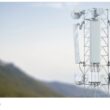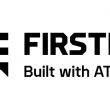T-Mobile: Wi-Fi an option for first responders
It’s a sign that Wi-Fi networks have come a long way. Steve Sharkey, chief of T-Mobile’s engineering and technology policy and former top standards guy at Motorola, visited the FCC earlier this month touting the carrier’s Wi-Fi calling service as a solution that will enable first responders to maintain communications during emergencies and disasters.
As part of an FCC proceeding looking into how to maintain wireless communications in places where mobile infrastructure has been damaged or destroyed, Sharkey said T-Mobile’s Wi-Fi calling service would allow emergency workers to use their consumer devices by creating an ad-hoc Wi-Fi coverage area using satellite as backhaul. The solution also would avoid interference with surrounding ground-based cellular towers.
T-Mobile has been working heavily with Wi-Fi offerings for several years. It debuted its Hotspot@Home Wi-Fi calling services in 2007, and now almost all of its commercial phones can call via Wi-Fi. The offering lets users switch between Wi-Fi and the carrier’s cellular network. T-Mobile revealed earlier this year that 5 million of its 34 million subscribers route some of their cellular calls over a Wi-Fi network.
In its presentation with the FCC, T-Mobile not only touted the service’s usefulness in remote and hard-to-wire locations but its every-day usefulness in reducing costs (when roaming between T-Mobile’s network and Wi-Fi) and providing secure communications. In addition, T-Mobile touted mission-critical applications such as mass and emergency notifications and phones with cooperative situational awareness. You can see T-Mobile’s presentation here.
“This product — and other similar market-based network solutions — would enable first responders to use the same smartphone handset in the stressed environment that they use day to day, with access to their phone/contact data and Internet applications,” Sharkey wrote in a filing with the FCC. “Further, this type of solution would enable use of spectrum in stressed environments while also mitigating the interference potential to traditional commercial mobile wireless networks. T-Mobile believes the market will continue to develop similar types of effective offerings without the need for any FCC mandates. These types of solutions are examples of potential approaches to assist first responders and other public safety personnel to better serve the public during emergency situations.”
Wi-Fi has proven to be an indispensible tool for data connectivity during emergencies, because it can be set up quickly, but it has not been used for voice services. But there isn’t a reason why that can’t be the case, especially when virtually all commercial smartphones come with Wi-Fi.
T-Mobile’s solution, however, leverages Unlicensed Mobile Access (UMA) technology that has to be built into the smartphone. The UMA-enabled phone and a router seamlessly hand off mobile calls from the cellular network to the Wi-Fi network. But there are several third-party providers offering voice over Wi-Fi calling, and it has been around for years in the enterprise.
It’s time to take a look at Wi-Fi as a voice contender.
What do you think? Tell us in the comment box below.
















